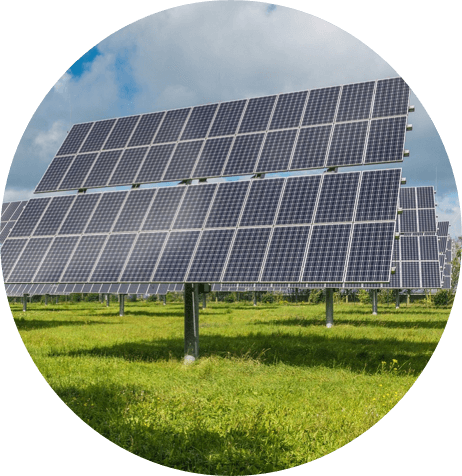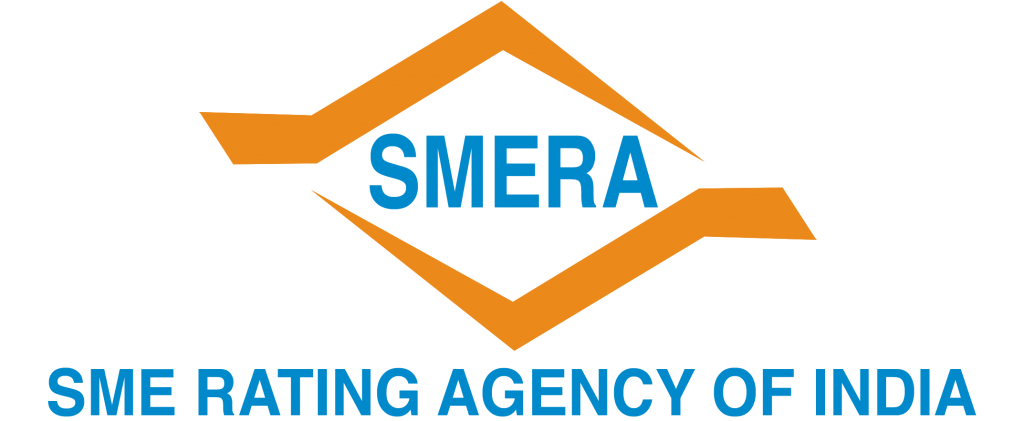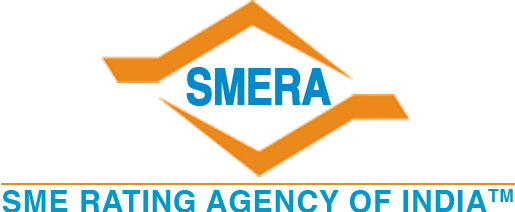
Solar Grading for Renewable Energy Companies
This grading methodology explains the key factors considered by SMERA to grade companies to undertake solar projects. The grading would be done for system integrators (SIs), renewable energy service companies (RESCOs), manufacturers of solar related equipment, solar project developers and start-ups in the sector.
Grading Scale
SMERA’s solar grading reflects “the performance capability and financial strength of the solar company to undertake solar power projects for rooftop/on-grid Solar PV applications.” The grading is done on a 5×5 matrix (5×5). This matrix assesses the firm on two broad parameters – performance capability and financial strength. Performance capability includes aspects such as track record of the firm in solar business, the diversity of its product profile, customers’ and suppliers’ feedback on performance, as well as factors like technical competence, adequacy of manpower, and quality of management of the firm. Financial strength assesses the firms with respect to revenue generation, profitability and financial flexibility. The grading scale is given below:
SOLAR GRADING SCALE | Financial Strength | |||||
Highest | High | Moderate | Weak | Poor | ||
Performance Capability | Highest | SP 1A | SP 1B | SP 1C | SP 1D | SP 1E |
High | SP 2A | SP 2B | SP 2C | SP 2D | SP 2E | |
Moderate | SP 3A | SP 3B | SP 3C | SP 3D | SP 3E | |
Weak | SP 4A | SP 4B | SP 4C | SP 4D | SP 4E | |
Poor | SP 5A | SP 5B | SP 5C | SP 5D | SP 5E | |
The grading is valid for a period of one year from the date of assignment.
Grading Methodology
System Integrators, manufacturers, solar project developers and start-ups are firms which are involved in the end-to-end execution of the entire project and are also responsible for maintenance of the equipment/system. The parameters for the grading of solar companies are summarised in the table below:
Performance Capability | Financial Strength |
1. Promoters Track Record a) Solar Capacity Installed b) Promoters’ relevant track record c) Quality of second tier management 2. Technical Expertise and Adequacy of Manpower a) Technical expertise b) Adequacy of manpower 3. Quality of Supplier and Tie-Ups a) Quality of suppliers b) Supplier feedback 4. Customer and O&M Network a) Customer feedback b) O&M capabilities | 1. Sales 2. Return on Capital Employed (RoCE) 3. Total Outside Liabilities / Tangible Networth 4. Interest Coverage 5. Net Worth 6. Banker’s Feedback on account conduct and integrity 7. Current Ratio/Liquidity |
Performance Capability Assessment for Solar Companies
A brief description of the performance capability indicators are given below:
Promoter Track Record
Solar Capacity Installed – The track record of the firm in terms of solar capacity installed reflects its capability in terms of size of projects executed and the management’s ability to effectively manage projects of various scale.
Promoters’ Track Record in Similar Business – The number of years of relevant experience of the promoters in a similar business will be factored into the assessment. Experience in a similar business enables promoters to have a better understanding of the sector. Further, aspects such as performance of group companies, financial gearing levels of group companies and risk appetite displayed by the promoters is also taken into consideration.
Quality of second tier management – The ability of the second tier management to successfully execute solar power projects with relevant experience of the top management is also to be taken into consideration. In case part of the project execution is being sub-contracted, the quality of the subcontractors, their track record and experience is also assessed. The management’s ability to arrange the necessary resources for successful implementation of the project is a critical parameter for assessment.
Technical Competence and Adequacy of Manpower
Technical Competence – This is an important parameter in technology-oriented business as knowledge or understanding of solar cells/collectors, panels and other components is a pre-requisite to operate this complex technology. Since most of the firm applications also take-up the O&M functions, therefore technical knowhow is critical. Moreover, long term sustainability of firms requires introduction of new products and services and thus technical competence serves as an important factor for determining firm capability.
Adequacy of manpower – This parameter assesses the adequacy of manpower available which is on payroll of the firm and hence determines its ability to reach out to its customers. SMERA assesses not only the adequacy of manpower strength that the firm employs but also its quality. Quality of manpower is important determinant of firm capabilities as personnel with diverse skills and experience are required to undertake repair and upkeep of multiple equipments. The proportion and nature of work outsourced by the firm is assessed to evaluate the quality and adequacy of the personnel. The firm which carries out most of the core activities including design, installation and O&M using its own resources is assessed more favorably as compared to the firm who subcontract these core activities to a third party.
Quality of Supplier and Tie-Ups
Quality of Suppliers – This parameter assesses the credentials of the suppliers in terms of their operating history, track record of successful implementation of projects and their other customers’ profile. The quality of the supplier is important as the life span of key components determines the operating costs and cost per unit of power generation over long-term.
Supplier Feedback – This parameter focuses on assessing the level of engagement between the firm and its supplier, delays in payment and length of relationship between the firm and its supplier. The assessment also links the supplier’s feedback with the payables days as per the financial statements.
Customer and O&M Network
Customer Feedback – This parameter focuses on assessing the quality of service delivered to customers in terms of timeliness of service delivered and level of customer satisfaction, in case the firm has already completed a few projects. It will also reflect the length of relationship between the customer and the firm.
Operations and Maintenance Capability – After sales service plays an important role in solar power projects. In order to determine the operation and maintenance (O&M) capability of the firm, the geographical spread of the O&M network that has been established and availability of qualified and trained manpower is evaluated. In addition, the track record of renewal of annual maintenance contracts (AMCs) by clients is also a reflection of the level of customer satisfaction and O&M capability of the firm. Some of the other aspects which are evaluated under this parameter include the AMC policy, turnaround time and geographical reach etc.
Financial Strength Assessment
SMERA considers only the audited financials of the firm for the purpose of assessing its financial strength. The various parameters used to assess financial strength are described below –
Sales – For firms with a meaningful operating history, the revenues provide an insight into the capability of the firm as well as the capacity to execute projects. A certain size also provides benefits in terms of attracting manpower, scale economies and financial flexibility. The quantum of sales and growth in sales (from solar and non-solar business) is also a good indicator of revenues that a business can generate in the future.
Return on capital employed (ROCE) – RoCE indicates the returns generated by the firm on the total capital employed in the business. The ratio comprehensively indicates the profitability generated by the business and how well the firm is run by its management. A consistently low ROCE reflects the firm’s poor viability over the long term.
Total outside liabilities by tangible net worth – The nature of business (i.e. project execution and O&M) requires the firm to have very low fixed assets and most of the funding requirement is towards the working capital. An analysis of the total outside liabilities (debt as well as current liabilities) to the tangible net worth of the firm provides a good indicator of the overall indebtedness of the firm. The lower this ratio, the better the financial strength, since it gives the firm flexibility to take on additional liabilities to contract higher business volumes if required.
Interest coverage – Interest coverage represents the extent of cushion that the firm has in meeting its interest obligations from surpluses generated from its business operations. This ratio is important as it reflects the firm’s ability to meet its financial obligations in a timely manner. Firms with higher interest coverage ratios can withstand adverse business conditions and hence have better financial strength.
Net worth (Firm + Promoter) – Net worth or capital (in case of company) reflects the promoters’ funds deployed in the business. There is no fixed repayment or servicing obligation on these funds, which thus act as a cushion against adverse business conditions. For the purpose of this computation, the framework includes even the personal net worth of the promoters (unencumbered fixed assets and liquid assets). As most firms are expected to be present in this business for a relatively shorter time period, they are unlikely to have a high capital investment by promoters. However, if the promoters have the ability to infuse additional funds, for the purpose of undertaking more projects, through their personal means, then that can be considered for the purpose of measuring financial flexibility.
Feedback from bankers – This involves an assessment of the firm’s relationship with the banker, timeliness of submission of various compliance reports to banks, instances of overdrawn accounts or bounced cheques or any other irregularities. As bankers form an important source of information on the operations as well as quality of management of the firm, their feedback provides important insights into the firm.
Current ratio – The current ratio indicates a firm’s overall liquidity position. Hence, the current ratio is a good indicator of its financial health and its ability to take on incremental projects.
In case of companies that are recently established, substantial emphasis is placed on promoter strength and their ability to infuse funds into the business, as required.

